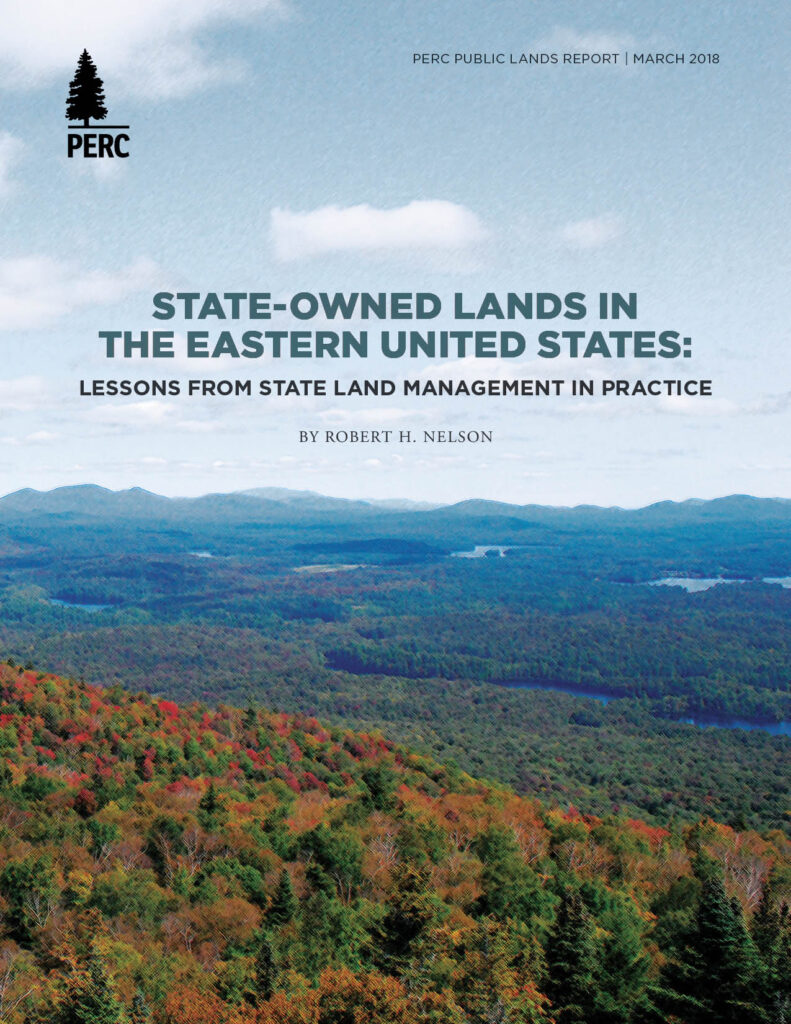DOWNLOAD THE FULL REPORT
Most policy discussions about public lands focus on the federal lands that comprise nearly 30 percent of the United States, most of which is found in the West. Yet there is another important class of publicly owned lands that are often overlooked: state-owned lands. State governments own and manage about 9 percent of the U.S. land area, about one-third as much land as the federal government manages. Outside of Alaska, which contains large swaths of state-owned land, almost 40 percent of state land in the United States is found in the East. Indeed, some eastern states own vast amounts of land, such as New Jersey (21 percent of the state); Florida (16 percent); New York (14 percent), Pennsylvania (14 percent), Michigan (13 percent), and Minnesota (11 percent).
Relatively little has been written about eastern state lands, in part due to the diversity of these states’ policies and management practices. No single book or comprehensive study examines state-owned lands in the East. Yet in several eastern states with large portions of state-owned lands, the management of those lands presents economic and environmental policy issues comparable to federal lands in the West. Because of their diverse management practices, state-owned lands offer many practical tools and lessons that might be usefully applied to federal land management.
This report seeks to fill that gap by examining the state land management practices of six eastern states. The author, Robert H. Nelson, has spent much of his professional career studying public land management, including 18 years as an economist in the Office of Policy Analysis in the Office of the Secretary of the Interior. As a professor at the School of Public Policy at the University of Maryland, he has written extensively on public lands, including The Making of Federal Coal Policy, Public Lands and Private Rights: The Failure of Scientific Management, and, most recently, The Use and Management of Federal Coal.
As readers of this report will discover, much can be learned from the diverse management practices of eastern state-owned lands. The eastern states examined in this report provide several practical management lessons in their roles as “laboratories of democracy,” including demonstrating how to:
- actively manage lands for multiple uses to generate revenue while also preserving important environmental and ecological values;
- raise revenue from timber harvests, hunting licenses, mineral leasing, recreation use fees, federal grant programs, and other sources to cover most or all land management costs;
- create innovative land management methods and administrative systems in response to local needs or conditions, such as the rapid growth of state wildlife management areas and other forms of “dominant-use,” the creation of new kinds of state land systems such as Adirondack Park in New York and the Pine Barrens in New Jersey that bring together large areas of both public and private land, and the use of transferrable development rights to resolve land-use conflicts;
- reduce litigation, political conflict, burdensome rules and regulations, excessive procedural requirements, bureaucratic formalities, and other barriers to flexible decision-making that are common in federal land management.
In short, eastern states have been a source of experimentation and innovation in land policies, administrative arrangements, and management approaches—often with considerable economic and environmental success. This success is demonstrated, for example, by the fact that most state forests have been certified by national accreditation organizations as meeting high professional standards of forest management.
The need to find common values on a national basis in an increasingly pluralist nation has contributed to the bitter divisions with respect to the purposes of federal lands. As instruments of state governments, state-owned lands have better-defined constituencies and clearer purposes that promote a stronger sense of land management accountability in response to citizens’ needs and preferences at the state and local level.
Review
Robert Nelson provides a useful service in filling a surprising missing gap in our understanding of public land management policy—the eastern state-owned lands and their land policies and practices. He notes that eastern states have been a source of experimentation and innovation in land policies and emphasizes what we can learn from the diverse practices of these “laboratories of democracy.”
— Roger A. Sedjo
Senior Fellow, Resources for the Future
Download the full report, including endnotes and references.




